Bucks & book publishing
Oh, the realities of royalties
If you’re thinking about writing books, it’s helpful to know some of the basics about how much money to expect, how advances work, and when—if ever—you’ll collect royalties. There’s much confusion out there, especially since all we generally read in the press is that Sarah Palin got $5 million for her book, Michelle Obama $65 million for hers.
For starters, forget that advance in multiples of $5 million. Most first-time book authors are lucky to get $50,000. (And at a small house or academic press, $5,000.) Any advance that is six figures is considered strong. In these tentative times, you have to be a pretty big celebrity—or an author who’s already got a track record of producing bestsellers—to earn in the sevens.
What’s more, that advance doesn’t all come at the front end, and it’s shared with an agent. Here’s what I’ve pulled together from various online sources as well as editors and agents.
Advances
An advance is actually an “advance against royalties”: A publisher gives you money when you sign a contract to produce a book, but you have to earn that money back through book sales before you start earning additional money from royalties.
Suppose your book will be published in hardcover and will sell for $20. If your royalty is 10 percent, you will get $2 per copy sold. If you get a $10,000 advance, you will need to sell 5,000 copies before the book “earns out” and you start to receive additional royalties.
The amount of the advance is based on how many books a publisher thinks it can sell. Classically, an advance reflected a book’s earning potential in the first year, less costs to the publisher (for designing the cover, paying for paper, printing, binding, shipping—not to mention marketing and publicity). This isn’t always true anymore, but it’s helpful to know how these things are calculated.
Advances are almost never paid out all at once. Traditionally, half of the agreed upon amount was paid on signing the contract, with the other half due once the revised manuscript was delivered and accepted by the editor. In recent years, publishers have often been dividing payments into thirds, payable one-third on signature of the contract, one-third on delivery and acceptance of the manuscript and one-third on publication. More and more payments are being divided into even smaller chunks, perhaps with a portion of the advance payable upon publication of the paperback edition, for instance.
Royalties
Authors agree to accept as payment for writing and delivering a book either a percentage (royalties) of the profits from the book’s eventual sales, or else a straight flat fee (work for hire).
Under a standard book publishing contract, authors earn a royalty on each book sold. Hardback royalties on the published price (list price) of trade books usually range from 10 to 15 percent. On trade paperbacks it is usually 7.5.
An “escalator” means that the royalty rate rises after an agreed sales threshold has been reached. For example, the royalty might be 10 percent for the first 5,000 copies, 12.5 percent for the next 5,000 copies, and 15 percent thereafter. Royalties for special sales—books sold at special prices—may be lower, e-book royalties higher.
Some publishers may offer lower royalties by basing them on the “published price” rather than the “price received”—i.e., a percentage of the publisher’s receipts from booksellers, which is usually much lower.
Work for hire
In certain cases a publisher may approach you to write a particular book or part of a text on a payment-only basis or as a work for hire. In these cases you will not receive royalties and you may not even hold the copyright. Think long and hard before accepting a work for hire agreement, as you will not share in the bounty if the book does well.
Different publishing houses, different books, different terms
Most of the books we see in bookstores and on bestseller lists come from what we call “trade,” or general, publishing. But other categories abound, like academic publishing, educational publishing, professional publishing, and tech publishing.
Manuscripts may be printed in hardcover, trade paper, or mass-market editions. And then there are e-books. Whether a book is published as one or the other is determined by other books on the market, review potential, the concept and intended audience, and the quality of the writing. Sometimes paperback rights are sold separately—even to another publisher.
In academic, educational, and professional publishing, advances are small to paltry, and royalty rates tend to be lower than those for general trade titles; the payoff may be in robust sales for a built-in audience. In trade publishing, advances to authors are standard, but not the huge advances that attract headlines, especially for first-time authors.
Titles with color illustrations integrated throughout may have lower royalties because of the higher production costs.
The fine print
Almost all traditional publishers issue royalty statements every six months. This means that almost all authors are paid only twice a year and then only if their advances have earned out and there are royalties owed to them. Further, even if their advances have earned out, authors still never know how much money, if any, they will receive during any given pay period. This is because, usually, until receipt of the royalty statements, they never know how many books they have actually sold, or what reserve against returns is being held by the publisher for that pay period.
Reserves against returns: Unlike most merchandise, creative works like books and CDs are sold on a returnable basis. That means that if a retail bookstore orders 100 copies of an author’s book and doesn’t sell any of them, then the bookstore can return all 100 copies to the publisher, for credit—which the publisher charges back against the author’s royalties. (Mass-market paperback books have only their covers stripped and returned, while the books themselves are required to be destroyed. Sales of these stripped books are illegal.)
In order to avoid overpaying the author, the publisher will withhold a percentage of the author’s royalties against returns. These returns tend to be higher at the outset, as reserves usually taper off during a book's life. If, for instance, unsold books are being returned to the publisher at a rate of 50 percent—meaning that out of 100,000 books shipped to retail bookstores and wholesalers (who also stock outlets such as supermarkets), 50,000 books have already been returned unsold—then the publisher may withhold 50 percent of the author’s royalties, as a reserve against returns. (The amount of the reserve is determined by the publisher.)
Subsidiary rights: The licensing a book for foreign markets, magazines, movies, etc.) will increase an author’s income for it. However, there is no guarantee that a book will ever produce any sub-rights income.
Royalties are paid only on the sales of new books. Under current copyright law, authors earn no royalties whatsoever from  the sales of used books, no matter how many times the used books are resold. (This is just one part of many reasons writers resent Amazon.)
the sales of used books, no matter how many times the used books are resold. (This is just one part of many reasons writers resent Amazon.)
Sources:
Interviews with various editors and agents.
 https://www.thebinderyagency.com/blog/howdopublisherspayauthors
https://www.thebinderyagency.com/blog/howdopublisherspayauthors
 http://www.writersservices.com/res/ri_adv_royalties.htm
http://www.writersservices.com/res/ri_adv_royalties.htm
| |
Share This:




